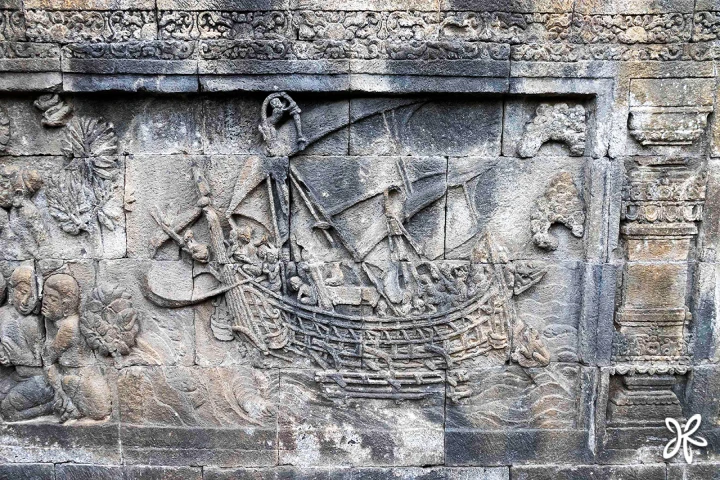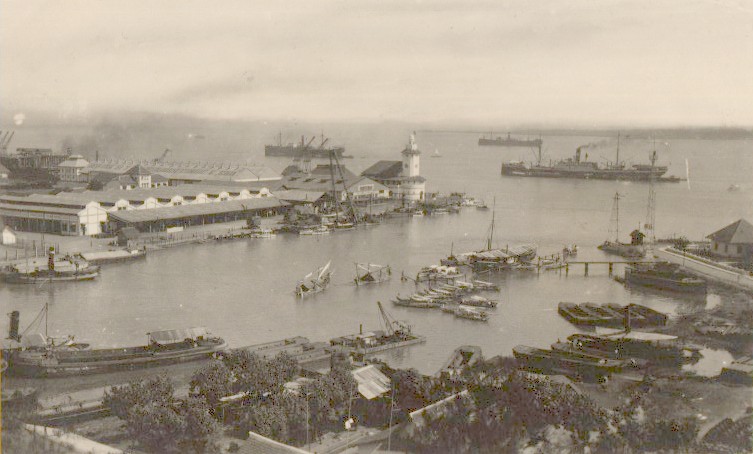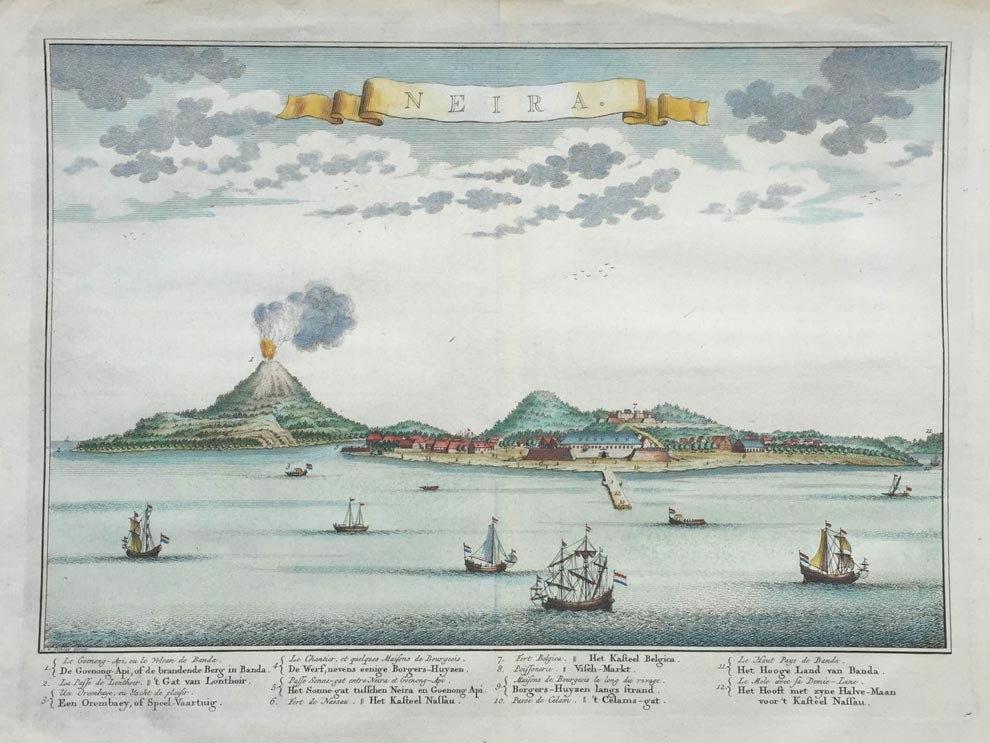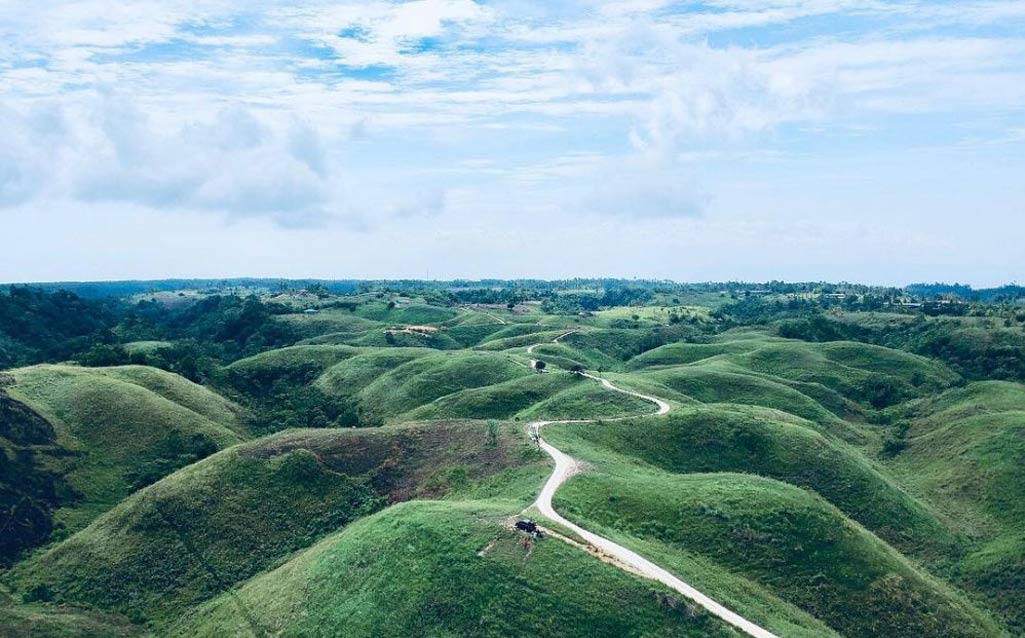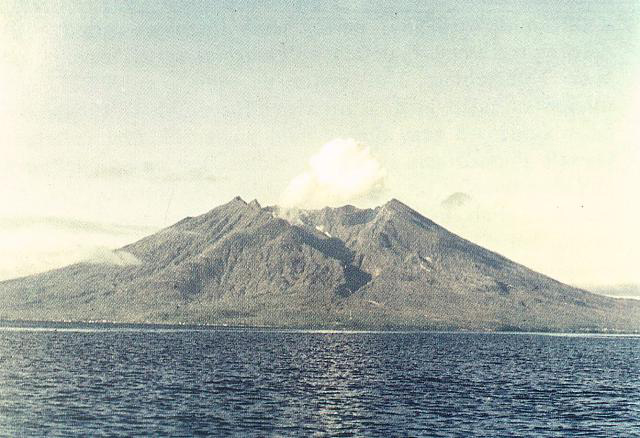
The Maluku Islands is the top spice producer in history. Thus, Maluku became a destination that attracted thousands of vessels inside and outside Nusantara, including Arab, China, and Europe. Makian Island was one of the most popular islands in Maluku to produce the best cloves.
We can see it through a prominent historical source of Bacan and Maluku Kingdom, Hikayat Bacan by W. Ph. Coolhas, published in 1923. Hikayat Bacan includes several islands within the trade route of the northern Maluku Peninsula.
“Ternate, Tidore, Moti, Makian, and Bacan once were connected, forming a peninsula called Gapi.”
Makian was the biggest clove producer among those islands and all of the spice islands. The production of Makian cloves was around 309 to 329.6 tonnes every year. Meilink-Roelofsz, a historian who wrote about Maluku, stated that Makian Island had the best port in Maluku.
Makian witnessed many rendezvous, for the Bandanese traders often berthed in Makian to carry the cloves to Hitu and Ambon. Further, international traders also gathered here using their jung ships, for cloves from other islands were also carried from this island.
Mauritius Fortress, built in 1612 by Pieter Both, the first Governor-General of VOC (1609-1614), is a silent witness of the spice routes’ trace on Makian Island. Further, Johannes Nessel also wrote a report for the VOC fleet’s leader, Arnold de Vlamingh van Outshoorn in 1651.
The fortress was strategic, for it stands tall on a hill, on the right side of Ngofakiaha or Ngofakioha village on the northwest coast of Makian, and thus it made an excellent place to monitor the sea. However, unfortunately, the fortress’s location was not strategic enough to keep a large number of trade goods. Governor Jacques Le Febure (1625-1629) then built Zeeburg near the coast that functioned as a residence and a warehouse.
In addition to being a part of the spice islands, Makian Island is also famous for its dangerous volcano, Kie Besi or Wakiong. The historical record states that this 1.300 masl mountain caused the wave of 6.000 refugees who escaped from the island. Due to the lava flood potential and the possibility of expanding the hot clouds, the settlement around the volcano belongs to the first level disaster-prone area. It gave rise to the distribution caused by the turmoil of Kei Besar that led the Makian ethnicity to spread widely on all parts of the North Maluku Islands, specifically Ternate and Halmahera.
Source:
Amal, M. Adnan. 2016. Kepulauan Rempah-rempah: Perjalanan Sejarah Maluku Utara 1250-1950. Jakarta: KPG.
Razif & M. Fauzi. 2017. Jalur Rempah dan Dinamika Masyarakat Adat Abad X-XVI: Kepulauan Banda, Jambi dan Pantai Utara Jawa. Jakarta: Direktorat Sejarah.
Text: Doni Ahmadi
Editor: Tiya Septiawati
Translator: Dhiani Probhosiwi



